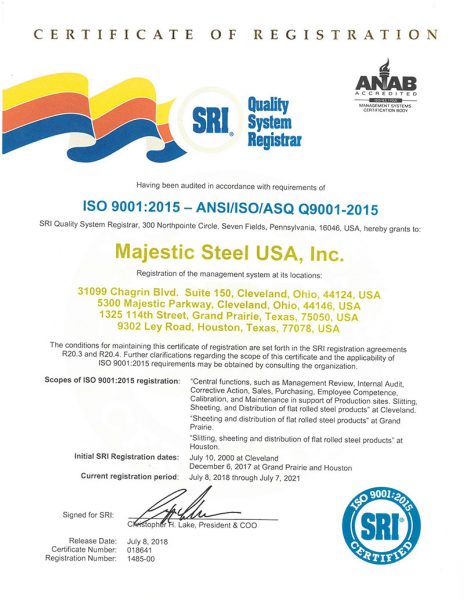Market Update | March 15, 2023
PRICES PAID BY CONSUMERS GREW SHARPLY IN FEBRUARY
The February Consumer Price Index was up 0.56% from January and up 6.04% from February 2022. Despite the elevated level, the year-over-year increase was at its lowest level since September 2021. The index for shelter was the largest contributor for increase, accounting for over 70% of the increase. The CORE index, which excludes food and energy, increased 0.5% from January and was up 5.54% from February 2022.
Input Costs
As the recent up and down movement for zinc continues, pricing declined slightly once again this week.
-
-
Zinc pricing came in at $1.30/lb this week, down from $1.36/lb previously and is at its lowest level since the early November.
- The recent situation with the unsettling around the banking industry has pushed the U.S. dollar higher, which inverse negatively impacts commodity pricing.
-
Continued recovery in steel demand from China has helped to push spot iron ore pricing higher, currently trading at $131.00/mt.
-
- This is up slightly from last week and is up nearly 20% over the last 90 days.
- China’s total iron ore imports over the Jan/Feb timeframe were up nearly 8.0% from the same timeframe last year.
Supply
After slipping last week, U.S. raw steel production increased this week.
-
- U.S. steelmakers produced 1.677 million tons at an 75.0% utilization rate.
- Production continues to remain in the tight range between 74.0% – 75.0% utilization.
- Despite the recent bump higher, YTD production is down 5.1% compared to last year.
Preliminary February import licenses, (27 days), showed carbon flat rolled imports are down 30% from the same time in January.
-
- Coated import licenses are showing the lowest import level since November.
DEMAND
January carbon flat rolled consumption came in at a rate of 132.3 thousand tons/day, up from a 127.0 thousand tons/day rate in December but remains well below the 153.5 thousand tons/day rate from last January.
-
-
Despite the month-over-month increase, this was the lowest January daily consumption rate since 2009.
-
Per/day coated flat rolled consumption increased after sliding for the fourth previous months, climbing 3.6% to a 50.2 thousand tons/day rate.
-
January was down 14.6% from the 58.8 thousand tons/day rate in January 2022 and is the second lowest daily rate (just ahead of December) since June 2020.
-
Business activity, from the manufacturing sector, in the New York region declined sharply in March.
-
-
The March Empire Manufacturing Index came in at -24.6, down 19.0 points from February and is at its lowest level since last August.
-
The two-month average came in at -15.2, down from 19.4% and at its best reading since December.
- Any reading below 0.0 shows a decline in activity, while any reading above 0.0 shows an increase.
- The new order component dropped sharply, sliding from -7.8 in February to a -21.7 reading in March.
- The shipment component declined as well, sliding to -13.4 from a 0.1 reading previously.
- The unfilled order component showed a slight improvement but continued to decline.
- The unfilled order component came in at -6.7, up slightly from -9.2 previously.
-
ECONOMIC
Despite coming in at a slower rate than in previous months, prices paid by consumers grew sharply in February.
-
-
The February Consumer Price Index was up 0.56% from January and up 6.04% from February 2022.
-
Despite the elevated level, the year-over-year increase was at its lowest level since September 2021.
-
The index for shelter was the largest contributor for increase, accounting for over 70% of the increase.
- The CORE-index, which excludes food and energy, increased 0.5% from January and was up 5.54% from February 2022.
- On a year-over-year basis, the largest increases in prices came from shelter (+8.1%), car insurance (+14.5%), furniture (+6.1%) and new vehicles (+5.8%).
-
This material, information and analyses (the “Content”) may include certain statements, estimates and projections prepared with respect to, among other things, historical data and anticipated performance. Content may reflect various assumptions by Majestic Steel USA, Inc. concerning anticipated results that are inherently subject to significant economic, competitive and other uncertainties and contingencies and have been included for illustrative purposes. Content is provided AS-IS.

